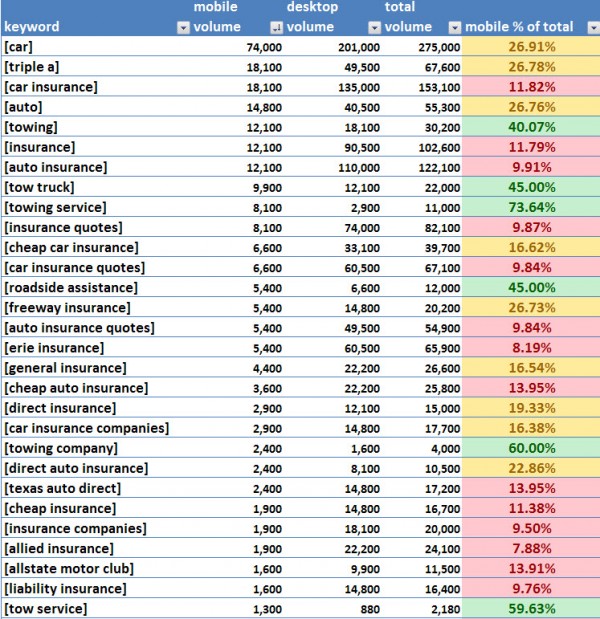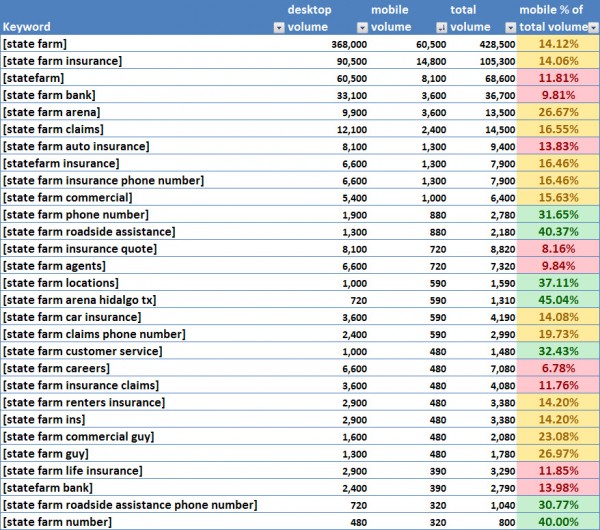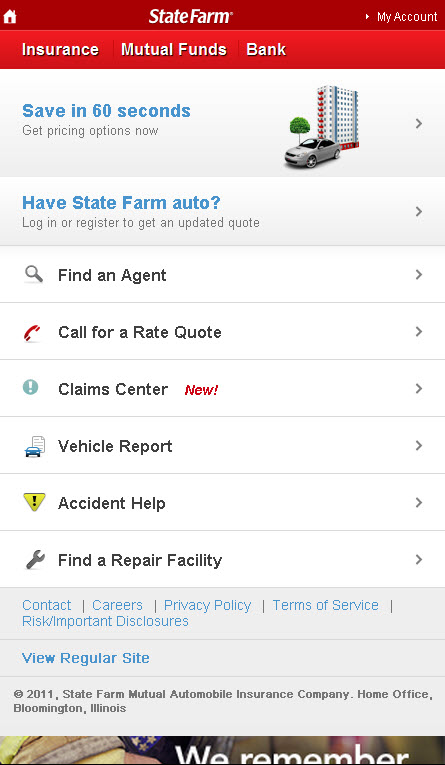Consider Mobile Content Carefully For Users & Better SEO
I’ve spoken a lot in these columns about the differences between mobile SEO and desktop SEO, often warning webmasters to do more than just reformat their desktop content for smaller screens. But if you’re in the process of creating a mobile site, you may be wondering what to put on your mobile site that’s different […]
I’ve spoken a lot in these columns about the differences between mobile SEO and desktop SEO, often warning webmasters to do more than just reformat their desktop content for smaller screens. But if you’re in the process of creating a mobile site, you may be wondering what to put on your mobile site that’s different than what is on your desktop site.
What content (if any) would be interesting to users of a mobile site that wouldn’t necessarily appeal to a stationary user on a desktop or laptop?
As search marketers, we should already understand the power of keyword research in letting your users tell you what they want and how they want it said on your website, and keyword research can help prioritize what content goes on a mobile site as well.
For example, you may sell car insurance to an English speaking audience in the United States, and you want to see how users are interacting with that type of content on mobile devices versus desktop devices.
Using the Google keyword tool in AdWords, you can filter by mobile volume in the advanced features, and select category data for insurance keywords for mobile users and desktop users.
If you put that data in a table like the one below, you can quickly see opportunities for content that mobile users are looking for en masse.
In the table above, you can see each keyword, its search volume on mobile devices and desktop devices, as well as the metric mobile percent of total volume, which will tell you which keywords and concepts are most viable for mobile sites.
In the mobile percent of total column, the lowest values are highlighted in red, and these indicate keywords with less than 14%, which is what Google claims mobile searches are on average.
The cells highlighted in yellow indicate keywords that have more volume than average, but not more than 30% of the total search volume, and green highlighted cells indicate keywords with more than 30% of the total searches coming from mobile devices.
These are going to be the keywords that mobile searchers are looking for more than desktop searchers, and the keywords and concepts smart marketers will build their mobile sites around.
In this example, there’s a clear winner which all auto insurance companies should consider putting front and center on their mobile sites, even if it’s just a small part of their desktop site: roadside assistance.
It’s also important to have information related to the core offering: auto insurance, of course; but this content isn’t likely to draw an engaged mobile audience in the same way that the related concept of roadside assistance will, and can be de-prioritized in the site architecture as a result.
This content should be usable and mobile-friendly, but if it’s not substantially different from the desktop content, it should have a canonical tag pointing back to the desktop site to conserve link equity.
If you do this same exercise with branded keywords you get even more insight into what your specific audience requires from your mobile site.
If State Farm, for example, were to look at branded keywords for their mobile insurance site, they would see their mobile users are asking for different things than their desktop users.
The keywords with the highest search volume and greatest mobile to total volume ratio are related to finding a phone number (for both customer service and the claims center), getting roadside assistance, finding locations of State Farm offices and directions to State Farm Arena in Hidalgo, Texas, and more information about an actor in their television commercials.
When you visit the site, however, you see that it’s lacking much of this content.
State Farm deserves more credit than most brands, as they have clearly thought about the mobile user experience and included mobile-specific content such as the Accident Help section of the site.
But if they also would have done this quick exercise, they would have seen that there are zero searches from mobile devices for the term [accident help], and more than 40,000 searches per month for towing keywords, including roadside assistance.
Furthermore, they would have heard from the mobile searchers themselves, and considered what they’re looking for from this brand’s mobile website.
All brands should be able to do these two exercises and find the content their mobile users are looking for on their mobile websites, but brands don’t have to stop there. A look at the top Google Mobile keywords for 2011 can give brands ideas for more branded content for mobile sites including the following:
- Branded Mobile Content, such as ringtones, wallpaper, games and apps don’t make a lot of sense for your desktop site, but they’re a natural fit for mobile. If you can build games and apps in HTML 5 as a mobile web app hosted under your domain, you’ll get more of a rankings boost for the rest of your mobile content than if you put it in an app store. Beyond that, research indicates that smartphone owners search on their phones when waiting in line, eating, using the bathroom, and killing time in general, so providing mobile entertainment is something they’ll likely thank you for.
- Mobile coupons, sweepstakes and other offers are a great way to get desktop users to try your mobile site, and they tend to boost link equity in the process.
- Videos and information about your television commercials might not seem the right fit for an on-the-go audience, but research indicates that 68% of smartphone users search to find more information about something they’ve seen in traditional media, and providing that information to users can be a great way to both track your traditional media investment and introduce more customers to your mobile properties.
- Giving mobile users the opportunity to interact with your brand on Facebook or Twitter is a natural fit for mobile sites, as nearly 40% of social network users access social networks from their mobile phones.
- Celebrity spokespersons, while not right for every brand, could bring the right brand a lot of visibility in mobile search, if the campaign is right.
Those are just a few ideas to help get started going beyond transcoded desktop content to a better optimized mobile user experience. If you have others, or know of sites that do a great job with mobile-specific content, please let me know in the comments. I’ll include the best ones in a future column on mobile SEO case studies.
Full disclosure: State Farm is an Omnicom client and a Resolution Media client for paid search.
Contributing authors are invited to create content for Search Engine Land and are chosen for their expertise and contribution to the search community. Our contributors work under the oversight of the editorial staff and contributions are checked for quality and relevance to our readers. The opinions they express are their own.
Related stories


